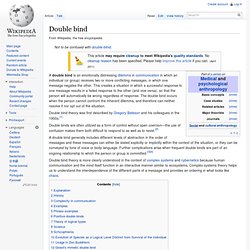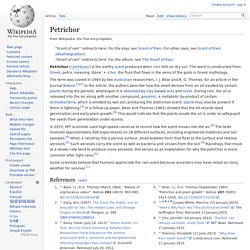

SO MUCH TO TELL YOU: the 100 club. Slippery slope. In logic and critical thinking, a slippery slope is a logical device, but is usually known under its fallacious form in which a person asserts that some event must inevitably follow from another without any rational argument or demonstrable mechanism for the inevitability of the event in question.

A slippery slope argument states that a relatively small first step leads to a chain of related events culminating in some significant effect, much like an object given a small push over the edge of a slope sliding all the way to the bottom.[1] The strength of such an argument depends on the warrant, i.e. whether or not one can demonstrate a process which leads to the significant effect. The fallacious sense of "slippery slope" is often used synonymously with continuum fallacy, in that it ignores the possibility of middle ground and assumes a discrete transition from category A to category B.
Shatner commas. Double bind. A double bind is an emotionally distressing dilemma in communication in which an individual (or group) receives two or more conflicting messages, in which one message negates the other.

This creates a situation in which a successful response to one message results in a failed response to the other (and vice versa), so that the person will automatically be wrong regardless of response. The double bind occurs when the person cannot confront the inherent dilemma, and therefore can neither resolve it nor opt out of the situation. Double bind theory was first described by Gregory Bateson and his colleagues in the 1950s.[1] Petrichor. Petrichor (/ˈpɛtrɨkɔər/) is the earthy scent produced when rain falls on dry soil.

The word is constructed from Greek, petra, meaning ‘stone’ + ichor, the fluid that flows in the veins of the gods in Greek mythology. In 2015, MIT scientists used high-speed cameras to record how the scent moves into the air.[5] The tests involved approximately 600 experiments on 28 different surfaces, including engineered materials and soil samples.[6] When a raindrop hits a porous surface, small bubbles form that float to the surface and release aerosols.[5] Such aerosols carry the scent as well as bacteria and viruses from the soil.[5] Raindrops that move at a slower rate tend to produce more aerosols; this serves as an explanation for why the petrichor is more common after light rains.[5]